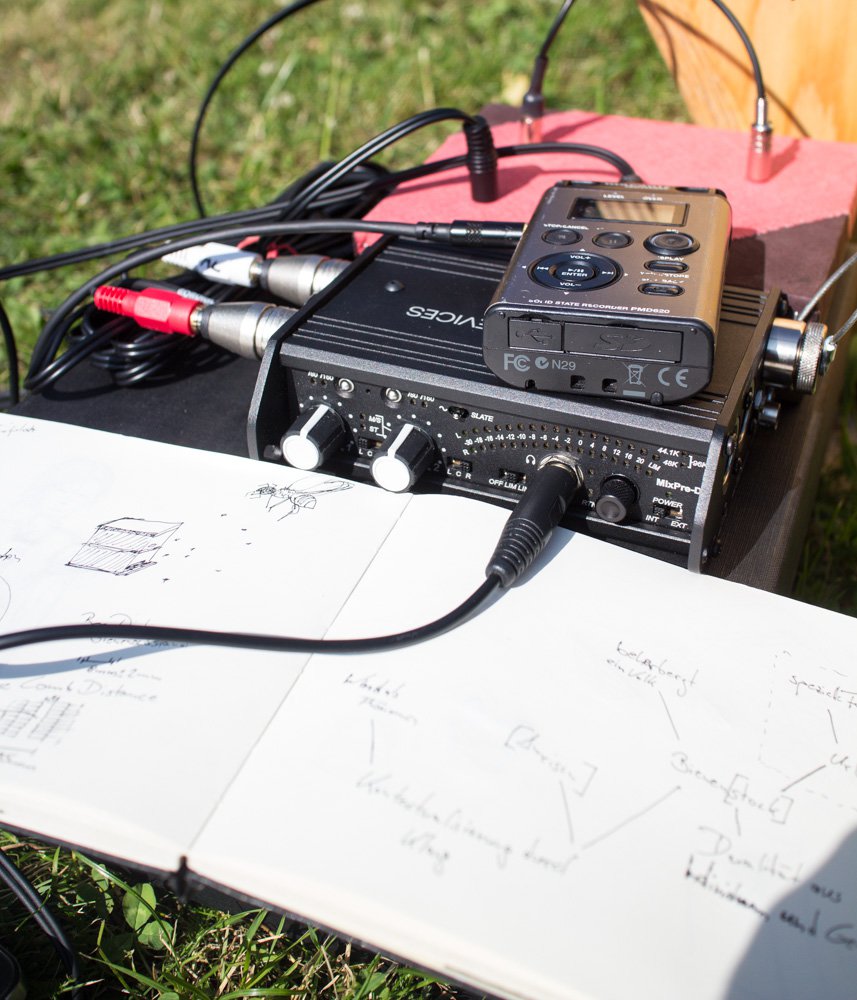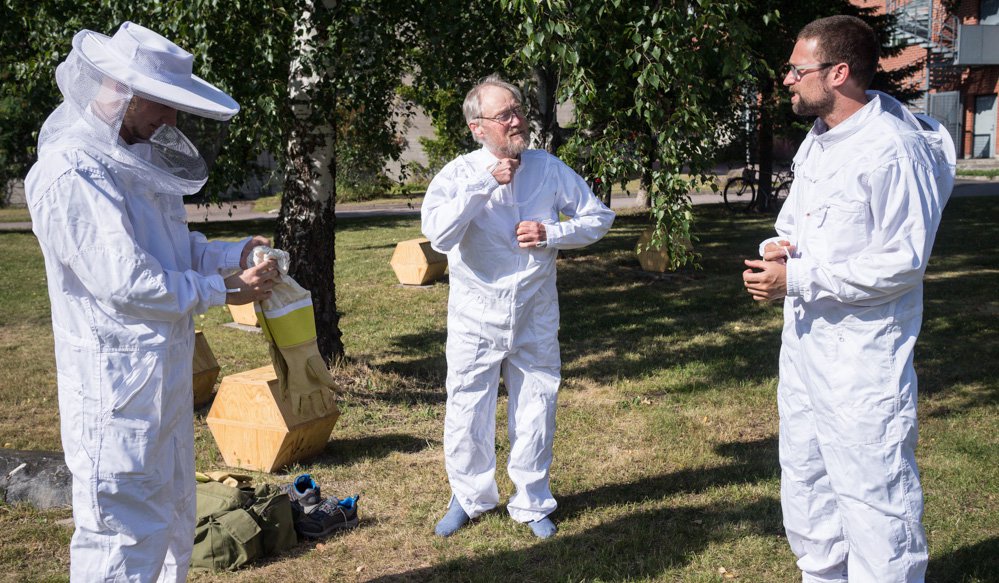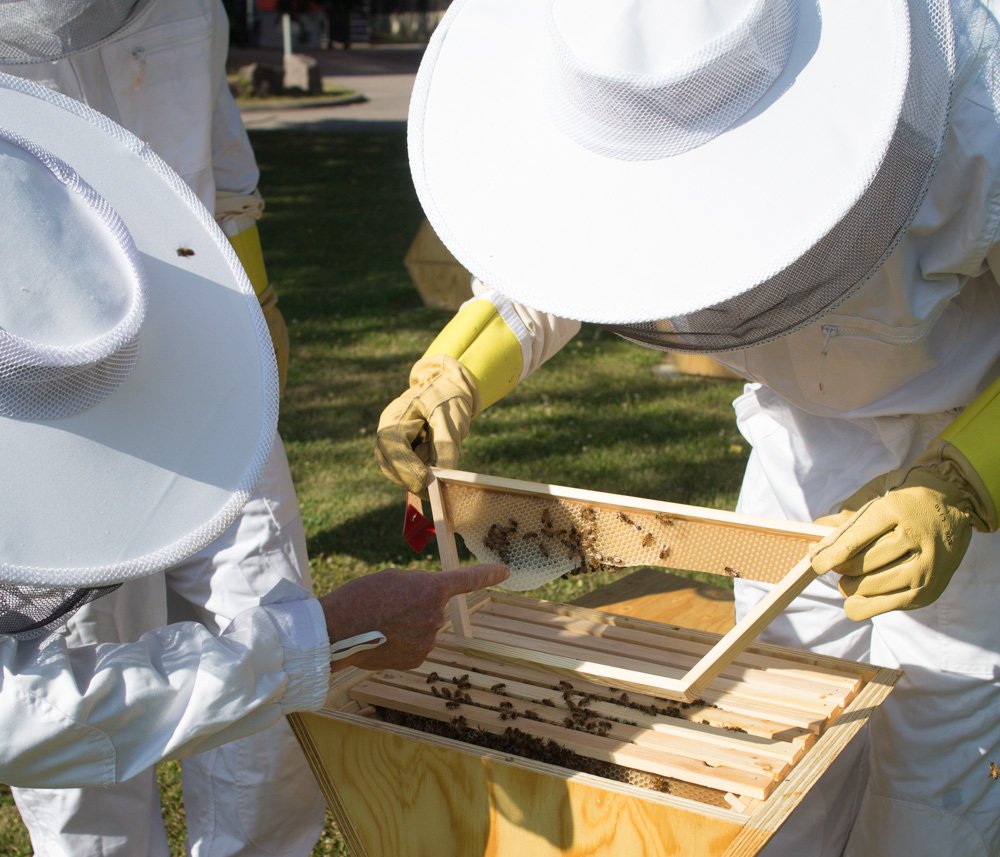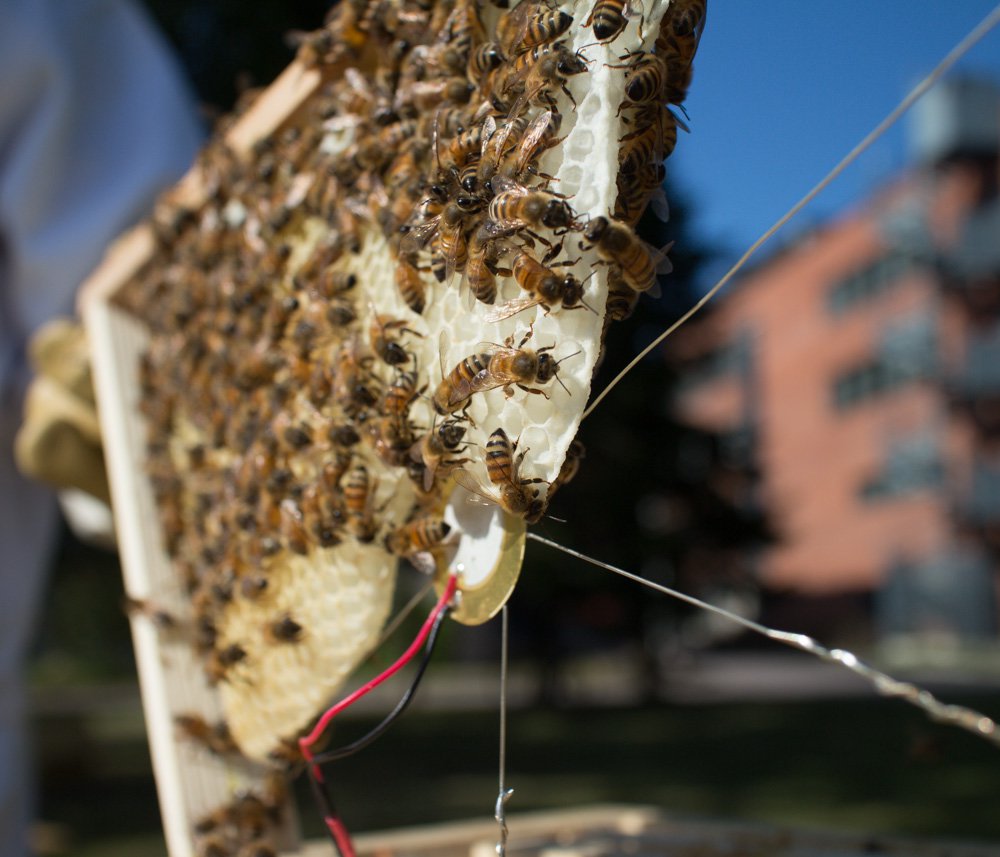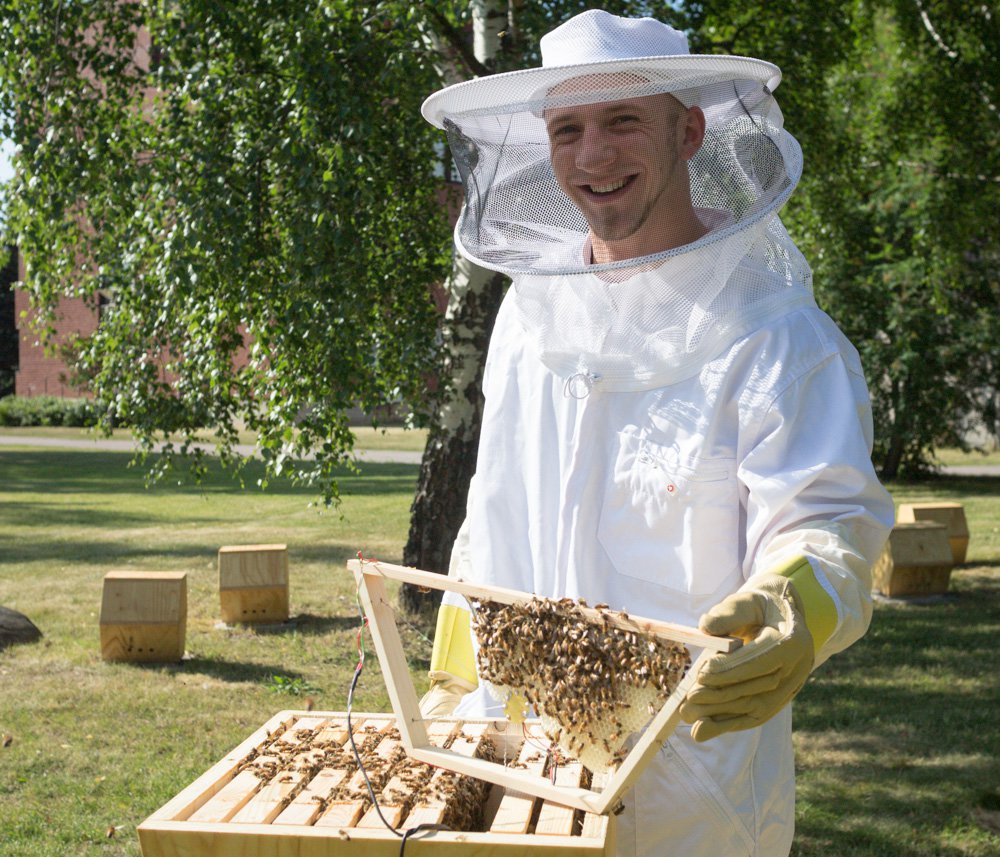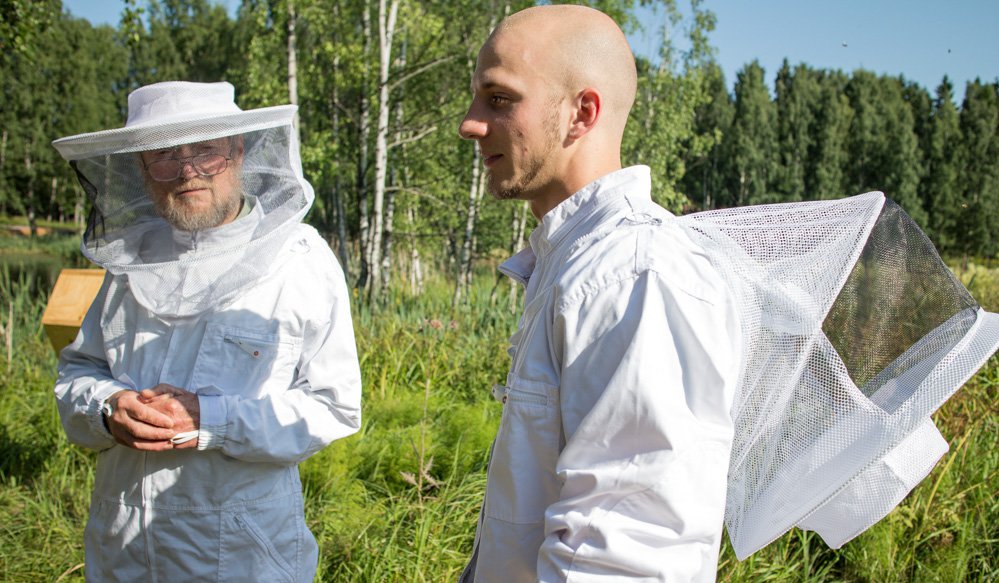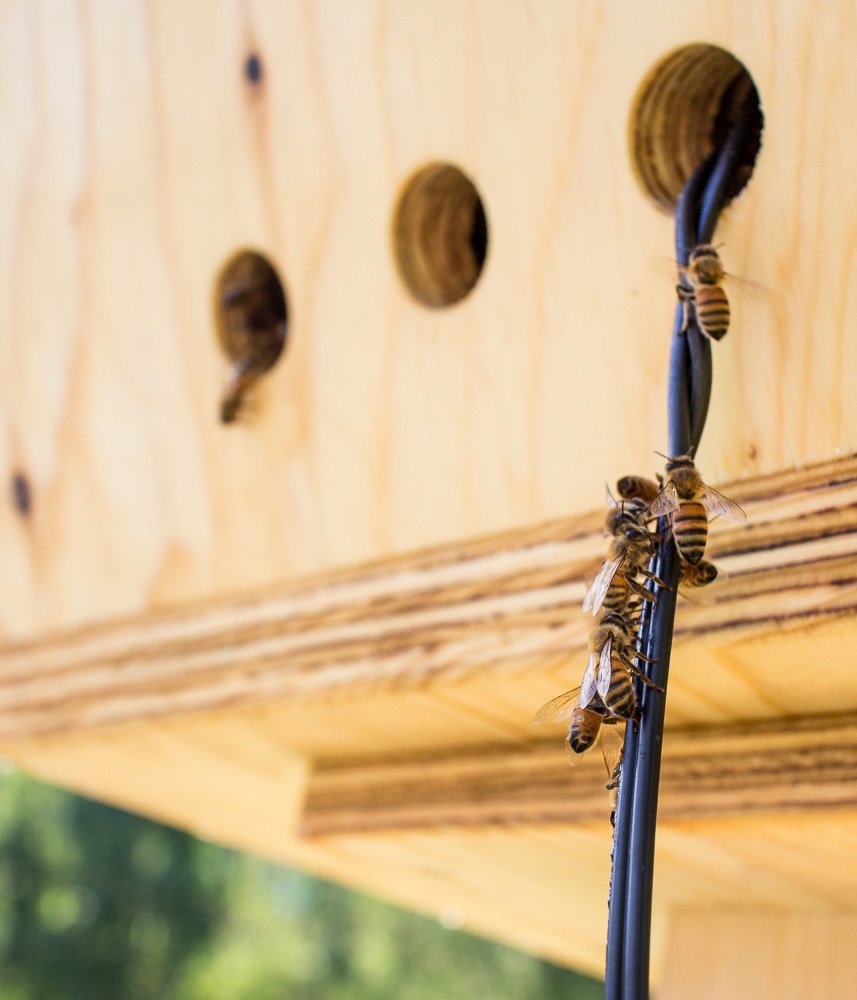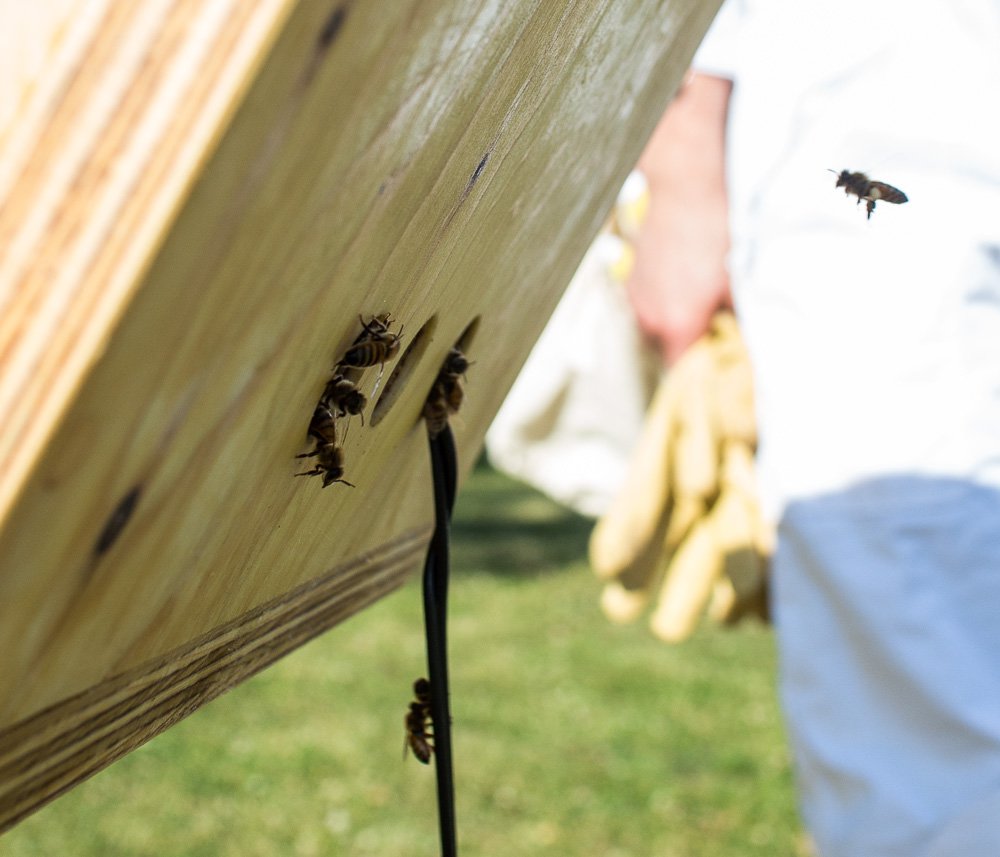Tuesday Link to heading
On Tuesday, 9.7.2013, I went to the hives alone. It was the first audio-only inspection. I was surprised that the sounds again developed into something different; now the overall tripping and buzzing stepped back to the background giving space for foreground activity such as individual buzzes and scraping.
Friday Link to heading
At the inspection on Friday, it became clear what made the change: instead of integrating the piezo element into the comb structure the bees decided to build around it. that way, their wings are often close to the disc and create the humming noise. I found on this webpage that, depending on their age, the base frequency differs a lot (estimates by Eddie Woods, inventor of the Apidictor):
- 285 Hz – 4-1/2 day bee fanning
- 250 Hz – Adult (9+ day) bee flying
- 225 Hz – 6 day bee fanning
- 190 Hz – Adult (9+ day) bee fanning
